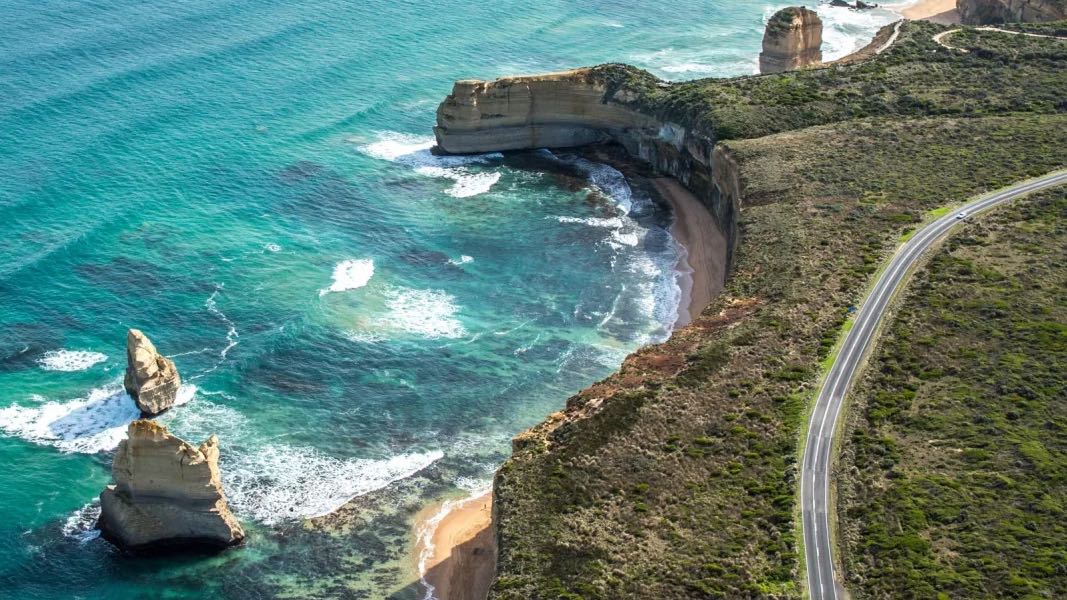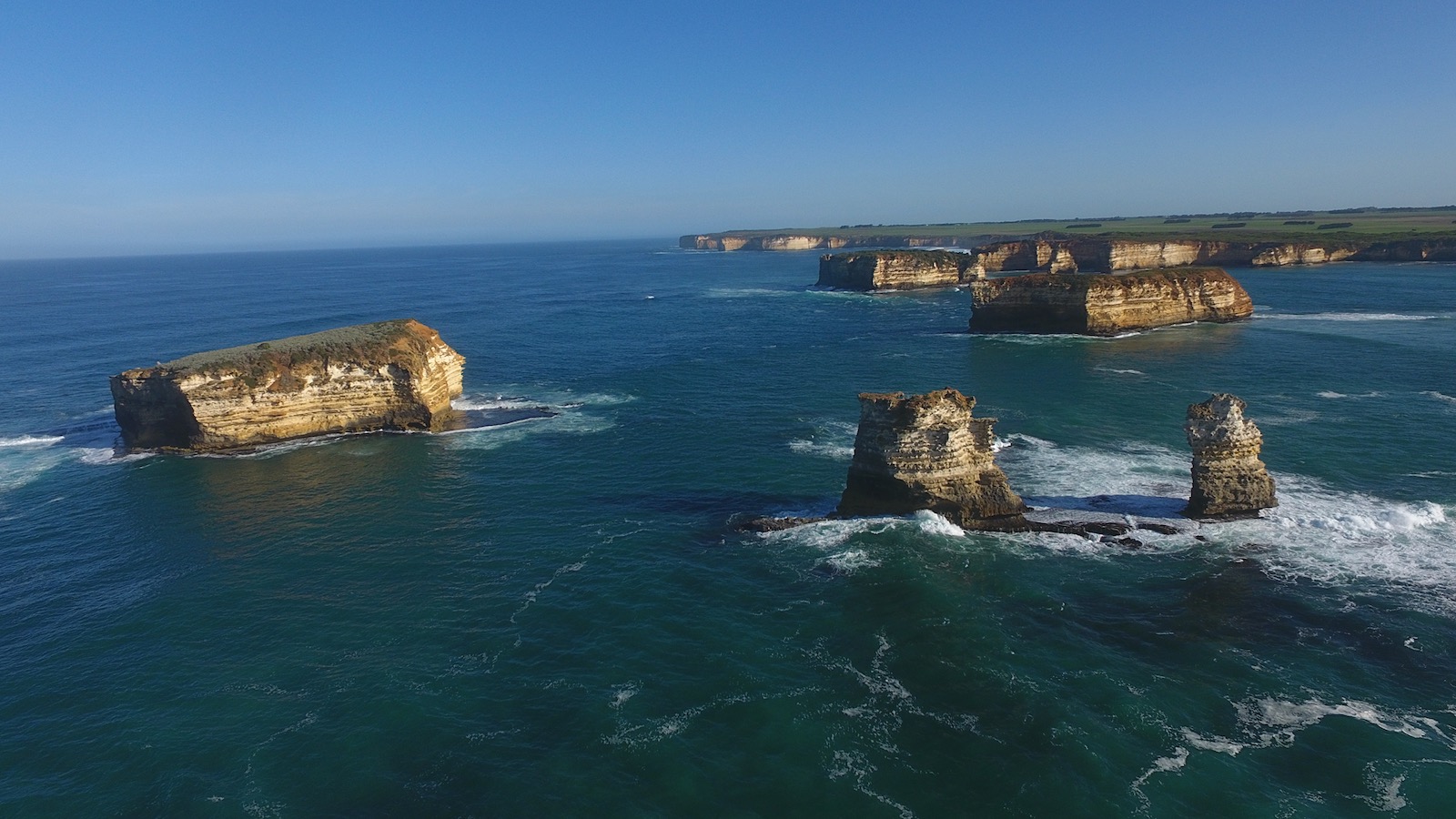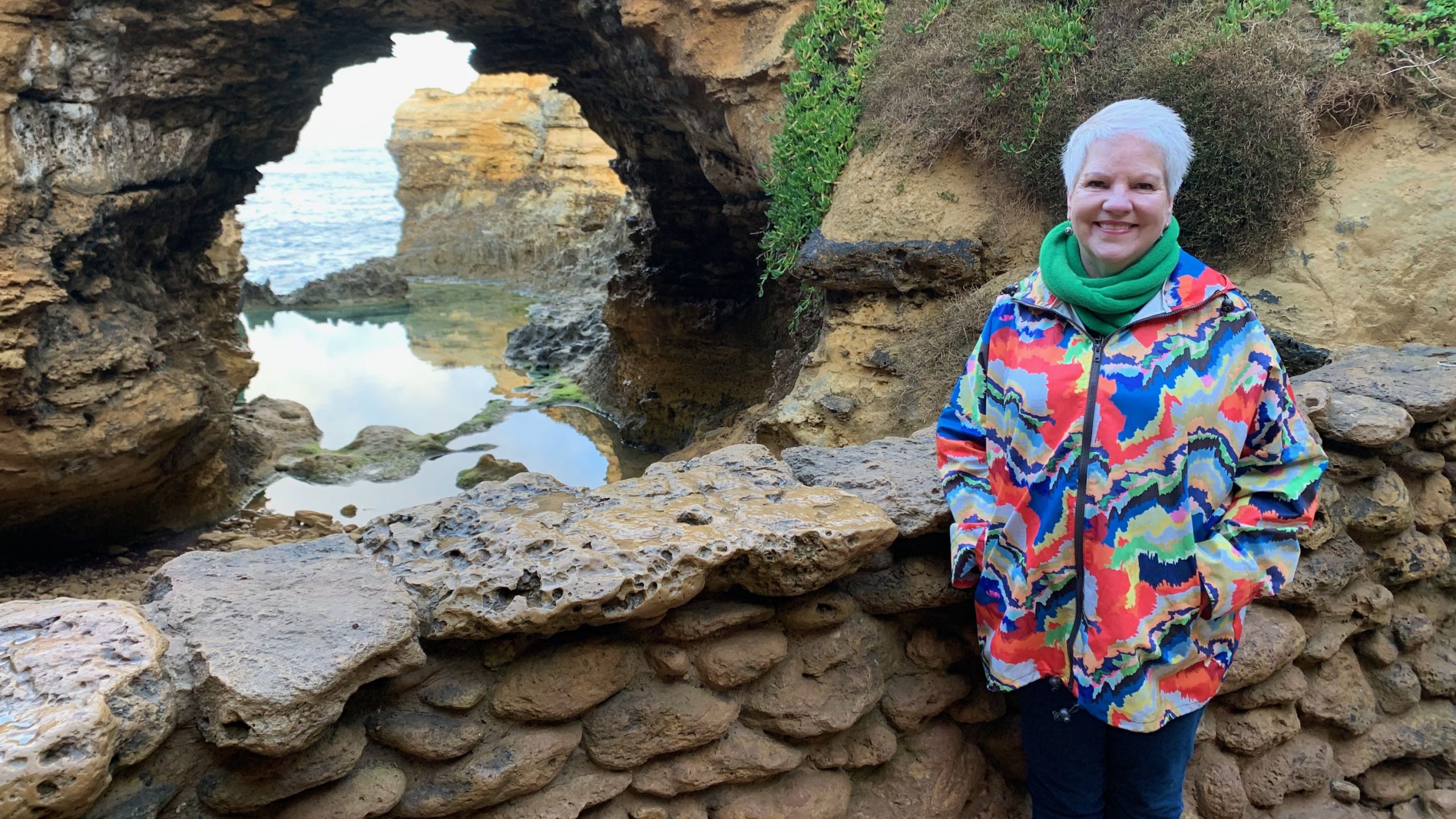London Bridge has fallen down
Nestled along the scenic Great Ocean Road in Victoria, Australia, London Bridge offers visitors a breathtaking display of nature’s sculptural prowess. This iconic limestone formation, part of the Port Campbell National Park, stands as a testament to millions of years of geologic artistry.
Geologic History:
London Bridge began its journey around 20 million years ago during the Miocene epoch. As sea levels rose, the Southern Ocean gradually flooded the coastal plains, depositing layers of sand and marine sediments. Over time, these sediments compressed into limestone.
The relentless action of waves, wind, and rain slowly eroded the softer sections of the limestone cliffs, carving out caves that eventually became arches. London Bridge was once a double-span natural arch connected to the mainland. However, in 1990, the inner span unexpectedly collapsed, leaving behind the solitary arch we see today – a striking reminder of nature’s ever-changing canvas.
Roday London Bridge stands as a magnificent symbol of Australia’s dynamic coastline, offering visitors a glimpse into the powerful forces that continue to shape our planet.
Visitor Information:
To reach London Bridge, drive along the Great Ocean Road to the Port Campbell National Park. A well-maintained viewing platform offers spectacular vistas of the formation and surrounding coastline. For the best photographic opportunities, visit during the golden hours of sunrise or sunset.
While the arch itself is no longer accessible, the viewing area provides ample opportunity to appreciate its grandeur. Informative signs detail the site’s geologic and cultural significance. Nearby, you’ll find short walking trails that showcase other remarkable coastal features.
Consider combining your visit with other nearby attractions like the Twelve Apostles, Loch Ard Gorge, and The Grotto. Local tour operators offer guided experiences that provide in-depth insights into the region’s natural wonders and rich history.
Safety:
Safety is paramount, so always stay on designated paths and heed warning signs. The weather can change rapidly, so dress in layers and wear comfortable walking shoes.




Leave A Comment